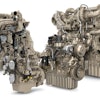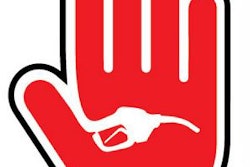
On July 25 the Environmental Protection Agency (EPA) published a new regulation that grants partial waivers allowing gasoline containing up to 15% ethanol (E15) into commerce for use in model year 2001 and newer light-duty vehicles.
But as of August 15, E15 had not been registered with the EPA and therefore is not yet legal for distribution or sale as a transportation fuel. It is nevertheless just a matter of time before E15 shows up at your local retailer. This should be a great cause for concern if you run off-road gasoline engines or on-road vehicles from pre-2001 model years, including outdoor power equipment such as cut-off saws, rammers, pumps, and generators.
Reason for concern
Ethanol is valued as an alternate fuel source but none of today's engines are designed to handle E15.
"Our industry and committee are not opposed to ethanol," says Kris Kiser, president and CEO of the Outdoor Power Equipment Institute (OPEI). "You can certainly design for E15, E20 or E25. The problem is the machines in the field today and the machines coming off the line are simply not designed for it."
Video: Be Sure to Use E10 or Lower Ethanol-Gasoline Blends
Ethanol is a form of alcohol. "Alcohol has inherent properties that cause issues with small engines for outdoor power equipment, and these issues become more acute with increasing alcohol content," says Laura Timm, communications director at Briggs & Stratton.
Adding ethanol to gasoline changes the characteristics of the fuel. "There are four main concerns," states Michael Major, manager, engineering regulatory compliance, Kohler Engines. "First, ethanol causes fuels to degrade more quickly and is corrosive to the fuel system components (fuel tanks, gaskets, hose, carburetors, fuel injector, caps, etc.). All these components must function correctly to ensure that the engine continues to satisfy the environmental regulatory requirements and offer acceptable performance. Ethanol is a very effective detergent and can dislodge existing deposits, which subsequently obstruct fuel flow."
Second, ethanol changes the combustion chemistry. "Fueling rates should be increased to compensate for ethanol content as the optimal air/fuel ratio for ethanol is different than for gasoline," Major explains. "In engines without closed loop fuel control, the fueling rate is not adjusted to compensate for ethanol content, potentially resulting in poor startability, higher operating temperatures, higher pollutant emissions and increased engine wear."
Third, ethanol content leads to greater phase separation. "Ethanol has a greater affinity for water than gasoline and absorbs moisture from the air," notes Major. "Water displaces gasoline in the ethanol-gasoline mixture. At some concentration, the water-ethanol mixture separates from the gasoline and sinks to the bottom of the fuel tank due to its greater density. The fuel pick-ups on small engines are typically located at the bottom of the tank and are prone to draw only the ethanol-water mixture."
Fourth, ethanol has a lower energy content. "Many of these negative impacts can be overcome with proper engine calibration such as replacing carburetor jetting or remapping fuel systems. But these services are expensive and unlikely to be performed on small engines," Major points out.
Today's small engines are primarily carbureted, meaning the air/fuel ratio is fixed unless the carburetor jetting is replaced. "Unlike a fuel injection system, carbureted engines' performance, startability and emissions may degrade as few consumers are likely to have the engines properly adapted for E15 consumption," says Major.
Reduced fuel shelf life
Of course, new vehicles will be designed to use ethanol in higher concentrations.
"Fuel system components in newer vehicles are designed, developed and manufactured with ethanol-compatible materials, eliminating some chemical corrosion concerns," says Major. "Newer vehicles are also unlikely to sit unused for extended periods of time and are less susceptible to fuel system corrosion and water absorption. Newer vehicle fuel injection systems (the last on-road vehicle carburetors were phased out in the early 1990s) have more advanced diagnostic and adjustment algorithms and sensors to maintain optimal fueling rates over a wider range of gasoline ethanol content."
But even with newer vehicles, storage will be an issue. Ethanol changes the shelf life of fuel dramatically. "Fuel that might have been good for six months or a year is now good for 30 days," Kiser points out.
Equipment with small gas engines typically operates in seasons. At the end of the season, it is often put away without any maintenance. "The fuel sits for six months or more until the equipment is required again. These extended periods provide time for ethanol to corrode fuel system components, absorb moisture from the air and loosen deposits," says Major. "While the newest small engines may have ethanol-compatible fuel systems, small [gas-powered equipment] is often kept for 15 years or more. Legacy product is most likely to sustain damage, particularly to carburetors."
"Now it is imperative that you burn the fuel before you store the product for the season or drain the fuel," Kiser emphasizes.
Real potential for failure
The over-arching concern about the published rule on E15 is the potential for mis-fueling. The EPA is counting on customers to read and abide by a warning label on the pump, which may be overlooked. In addition, retailers will not be required to carry gasoline with lower ethanol percentages. Since the price per gallon of E15 may be cheaper, depending upon fuel subsidies, it could become difficult to find stations that carry E10 fuel.
"The label is very weak and unlikely to prevent mis-fueling at the pump," says Major. "The label language is not assertive and does not inform consumers of the potential harm they are about to cause their engine. Further, the label will be completely ineffective if gasoline retailers switch entirely to E15 blends in all of their pumps. Consumers are likely to fill up with [E15] instead of driving around town looking for a remaining E0 or E10 pump."
"Mis-fueling by consumers is likely to be rampant," agrees Timm. "However, the EPA has not specified how the fuel will be available at gas stations. Some ideas floating around on how E15 would be presented include blender pumps or separate pumps altogether with the removal of mid-grade gas and relabeling the pump."
The key will be how consumers are educated. "We are deeply concerned about the installed base of over 70 million Briggs & Stratton engines that are currently owned by consumers and the chance that they may inadvertently select or not understand the consequences of using the inappropriate fuel for their products if they are not properly educated by the EPA," says Timm.
Consequently, the newly formed Engine Products Group - comprised of the Alliance of Automobile Manufacturers, Association of International Automobile Manufacturers, National Marine Manufacturers Association and OPEI - has filed a petition to challenge the EPA's decision to grant a partial waiver approving the sale of E15.
"We do not support the E15 approval in its current form - a partial waiver," says Kiser. The problem with a partial waiver is that the EPA is approving the use of E15 in 2001 and newer vehicles, while depending upon consumers to read a warning label at the pump to avoid putting the fuel in non-approved products. "That is not how we fuel our product. What goes in the car goes in the can. What goes in the can goes in the chain saw and the generator and the snowmobile. You are changing a paradigm."
Consumers are driven by purchase price. "It is likely that people will use lower-priced gasoline for their outdoor power equipment," says Kiser. "That is likely to be the E15 grade. Remember, there is less energy in ethanol so it is likely to be cheaper. People may not associate the cost difference with the fact that they are going to have to buy more fuel."
Initial tests conducted by the Department of Energy on outdoor power equipment indicate potential risks. "Essentially, our machines were adversely affected," states Kiser. "There were performance irregularities, too much heat, absolute engine failure and accidental clutch engagement. That prospect is scary if you have an open-bladed, clutched piece of equipment and the blade engages when the machine is in neutral."
The possibility of catastrophic failure is real. "Ethanol damage is permanent and irreversible," says Kiser. "It is not like running bad octane. Say you are a big landscaper and you send your crew out to fuel all of the equipment. If they get the wrong fuel, they can destroy every piece of equipment you own." This is probably not covered by warranty, since most equipment is only warranted to run on E10.
In addition, water and alcohol don't mix. "If you are in a water environment or you are in a humid environment, alcohol absorbs water and then the fuel separates," notes Kiser. "You have certainly changed the ability of the fuel to mix. If you have a two-cycle [engine] and you are trying to mix oil and gas, the alcohol can more strongly inhibit the mix, so you have a hard time keeping the mix stable and in place."
Price drives availability
The retailers will ultimately decide what fuel will be available in your region.
"Retailers prefer uniform systems and do not want to have separate, expensive facilities to ensure the relatively low E10 fuel availability," says Major. "Lower content ethanol blends will remain more expensive than E15 and consumers are likely to buy E15 even if E10 is available. Consumers must be aware that they risk severe engine damage to many small engine products and should demand E10 and E0 availability."
Changing the fuel available could have a major impact on consumers. "As with any renewable fuel, there are many concerns and potential benefits," says Major. "Kohler Engines would prefer that the EPA cease or postpone E15 implementation until the technical, policy and cost attributes are better understood."
Fuel selection needs to be straightforward, and the partial waiver for E15 creates confusion. "Briggs & Stratton, along with our industry association, had been encouraging EPA to conduct more comprehensive scientific testing before considering whether to issue the waiver," says Timm. "We were disappointed that a partial waiver for 2001 and newer vehicles was issued due to the confusion it will ultimately cause in the market and the potential for consumers to damage their product.
"Briggs & Stratton supports efforts toward energy independence and the use of biofuels," she continues. "However, our products were not designed to run on any fuel containing ethanol over 10%. We are strongly encouraging the EPA to educate consumers on the adverse impacts E15 will have on small engines and to put measures in place for consumers to prevent mis-fueling."





















